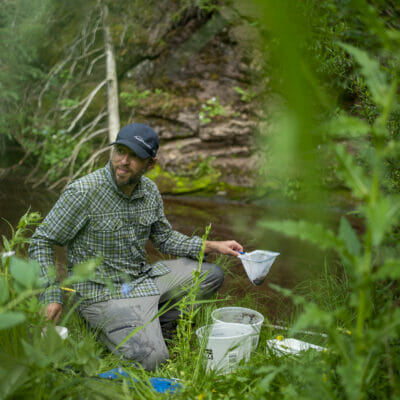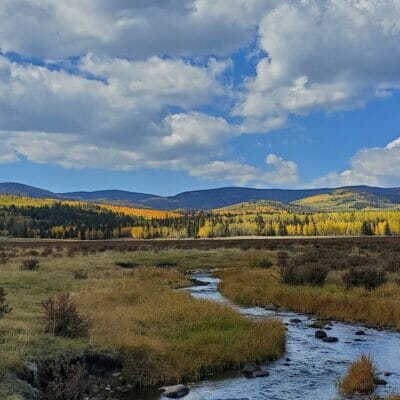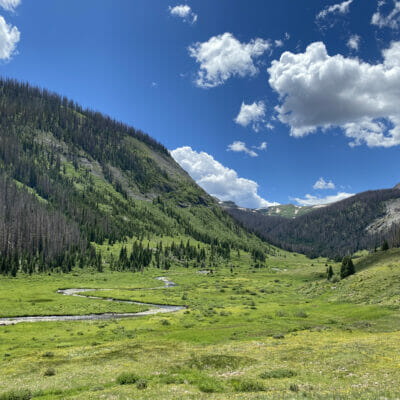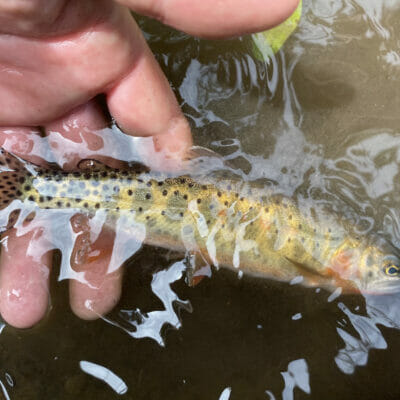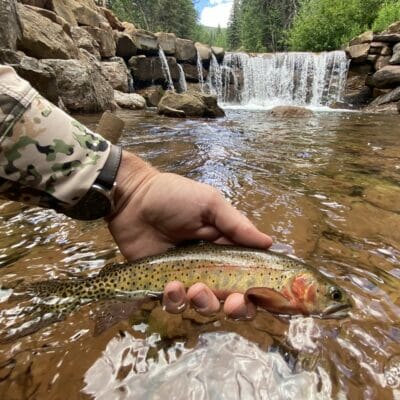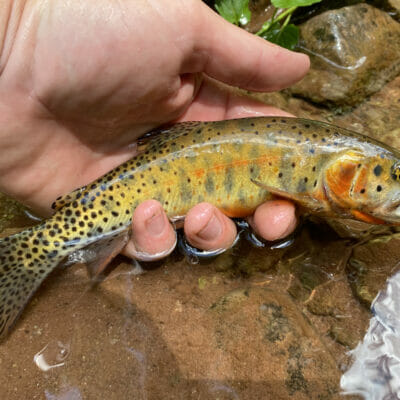Rather than an orderly collection of streamers, Gurglers and Egg-sucking Leaches, it looked, as I explained to my friends on a group chat as we planned out the week ahead, like the dog had coughed up a flamingo
Since the beginning of time fire has played a big part in shaping the western landscape. And that is even more true today with larger, more intense fires with more frequency. We dove into two researchers’ stories who determine the impacts of fires to forests and ultimately our beloved rivers––one in the summer issue of…
It looked like the brookies were almost certain to extirpate native cutts and that work to improve Jim Creek was a lost cause
by Daniel A. Ritz | July 29, 2021 | Travel
“New Mexicans have been here on this land for more than 400 years,” Mitchell said. “You can’t come in with a ‘trout guy’ perspective. These are age old relationships that we have to foster and work together with to build trust.”
Rio Grande cutthroat trout (Oncorhynchus clarkii virginalis) Species status and summary: Rio Grande cutthroat trout (RGCT) were first discovered in 1541 by Francisco Coronado’s expedition in the upper Pecos River, although they were not formally described until 1856. They represent the southern extent of the cutthroat trout species, historically ranging from the mountainous headwaters of…
by Daniel A. Ritz | July 26, 2021 | Travel
By pack mule and on foot, the Forest Service and Colorado Parks and Wildlife members went in to save the previously thought-to-be extinct lineage. Less than 100 individual trout were removed and taken to the Durango fish hatchery for safekeeping and possible brood stock development.
Colorado River cutthroat trout (Oncorhynchus clarkii pleuriticus) Species status and summary: The Colorado River cutthroat trout (CRCT) historically occupied most cool water habitats of the Colorado River watersheds in Colorado, southern Wyoming, eastern Utah, extreme northwestern New Mexico and northeastern Arizona. Currently, however, Colorado River cutthroat trout occupy approximately 16 percent of their historic range, primarily…



